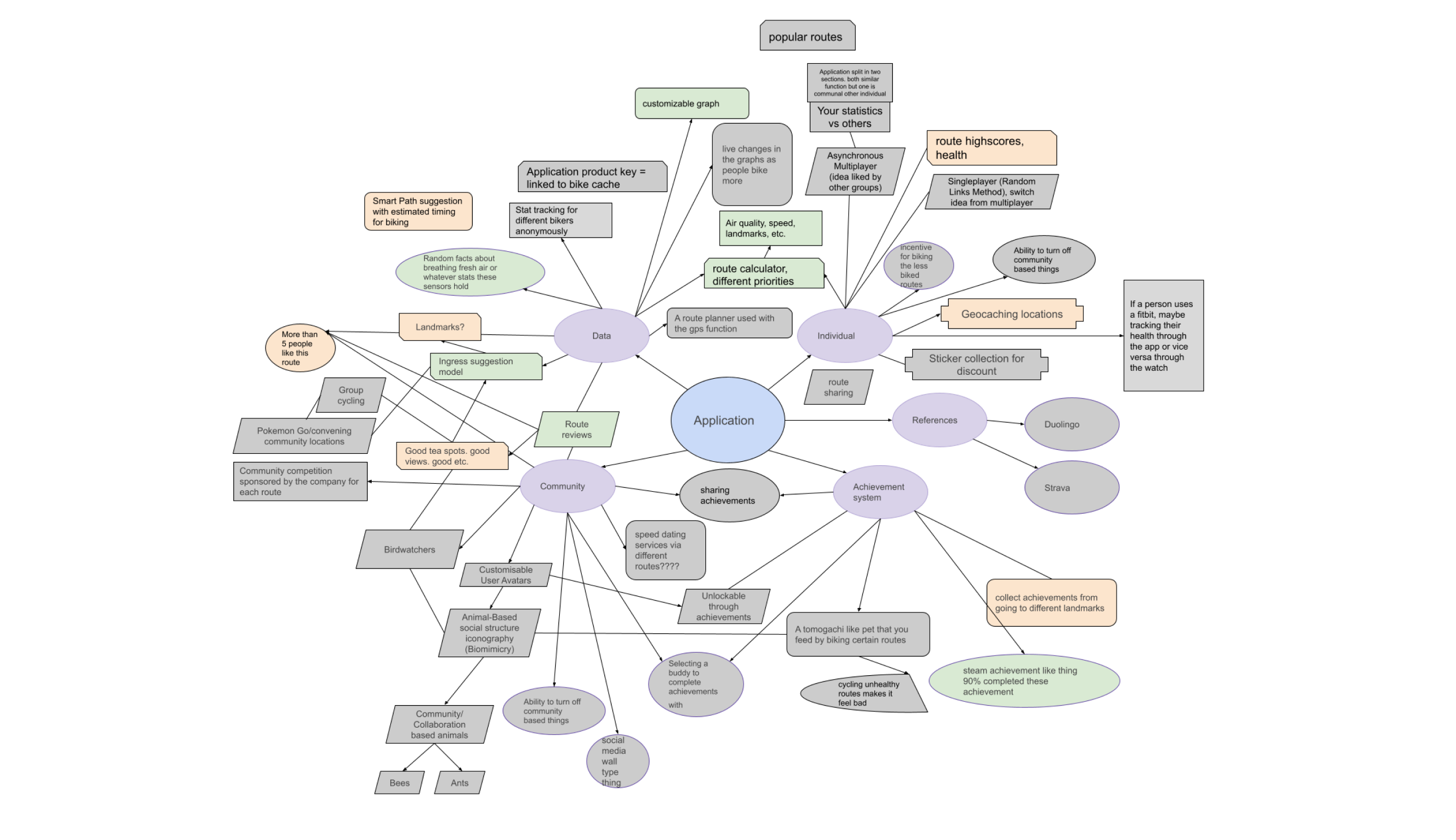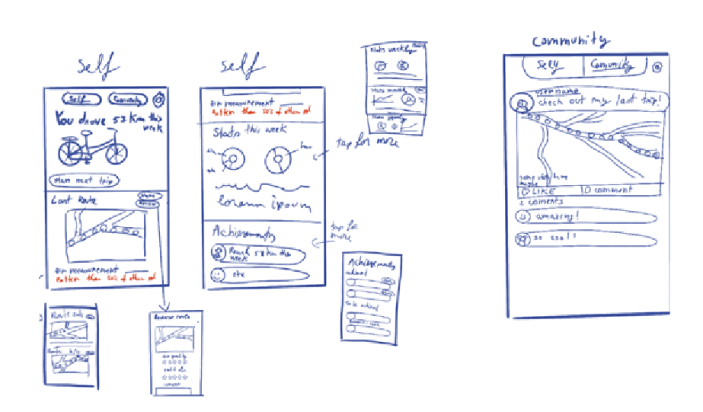UX Design
Snufflefiets
Mobile UX & UI
Civity, in collaboration a number of Dutch municipalities has rolled out the Snufflefiets project. This project allows anyone to be more health conscious by providing bike sensors that measure air quality parameters such as dust levels and pollution levels.


Due to technical problems we could not make use of the sensors provided by Civity, as such we did not fully understand the current experience provided by Civity.

Due to privacy agreements with various municipalities, Civity could not provide us contact with people who use the sensors
We decided to approach health conscious people between the ages of 40 and 60 who are interested in the qualities of their surroundings.
The research topics that I explored were user retention and usability.
Important factors in user retention: According to Lin et al. (2020), user retention significantly decreases during the first week. Because of this, helping first-time users navigate the application through making it easy to use and maintaining a frequently asked questions section is vital.
According to Kim J (2012), there are two important predictors that affect people's attitude towards a digital product. These two are perceived usefulness and perceived likability, which is related to how much users are emotionally attached to the digital product. This "affective link" impacts user retention due to the tendency of people to remain where they feel comfortable. Other criteria are simplicity and functionality.
User retention and engagement: Achievements and progression as gamification components can help both user retention and user engagement by satisfying the three main psychological needs presented in the self-determination theory: autonomy, competence, and relatedness. Creating a community could also achieve the same effect, as long as the autonomy psychological need is met.
Expert interview with a senior UX Designer: According to the expert, gamification is a component that gives users a reason to return to an application. He recommends we create a virtuous cycle through social features to allow users to feel noticed for the good things done. With our older target audience, concepts like XP might be too alien, thus we need to make the tasks ludic and fun. UX writing is also a notable technique to explore in relationship to the competition.
This information became design requirements.

Since most of our constraints were functional, we brainstormed a multitude of ideas and color coded them based on likedness to be implemented. Gray means it won't be included, yellow means maybe, and green means it will be included.
One of the first concept included a clear split between "singleplayer" and "multiplayer". The biggest problem with this separation was a technical one, because the application would have to make a difference between a trip that was meant for single player and a trip that was meant for multiplayer mode, without blending the two. Selecting the mode might have also became a headache for the user, so we ended up discarding the separation.

Instead, we ended up integrating the multiplayer variant directly in the experience through groups, making it easy to opt in or out of "multiplayer" by joining or leaving a group, while having the rest of their user experience remain unaffected.
After discussing with the client, we decided to focus the application around these subjects

The application had plenty of game elements, however it was very important to maintain a language that our target audience can still understand. For example: achievements are called objectives, guilds are called groups, experience points is simply called progress.

We iterated the application through multiple testing sessions with both people who were interested in the sensors, and also with our target audience.
The process involved frequent meetings with one of civity's developer to ensure our project remains feasible

